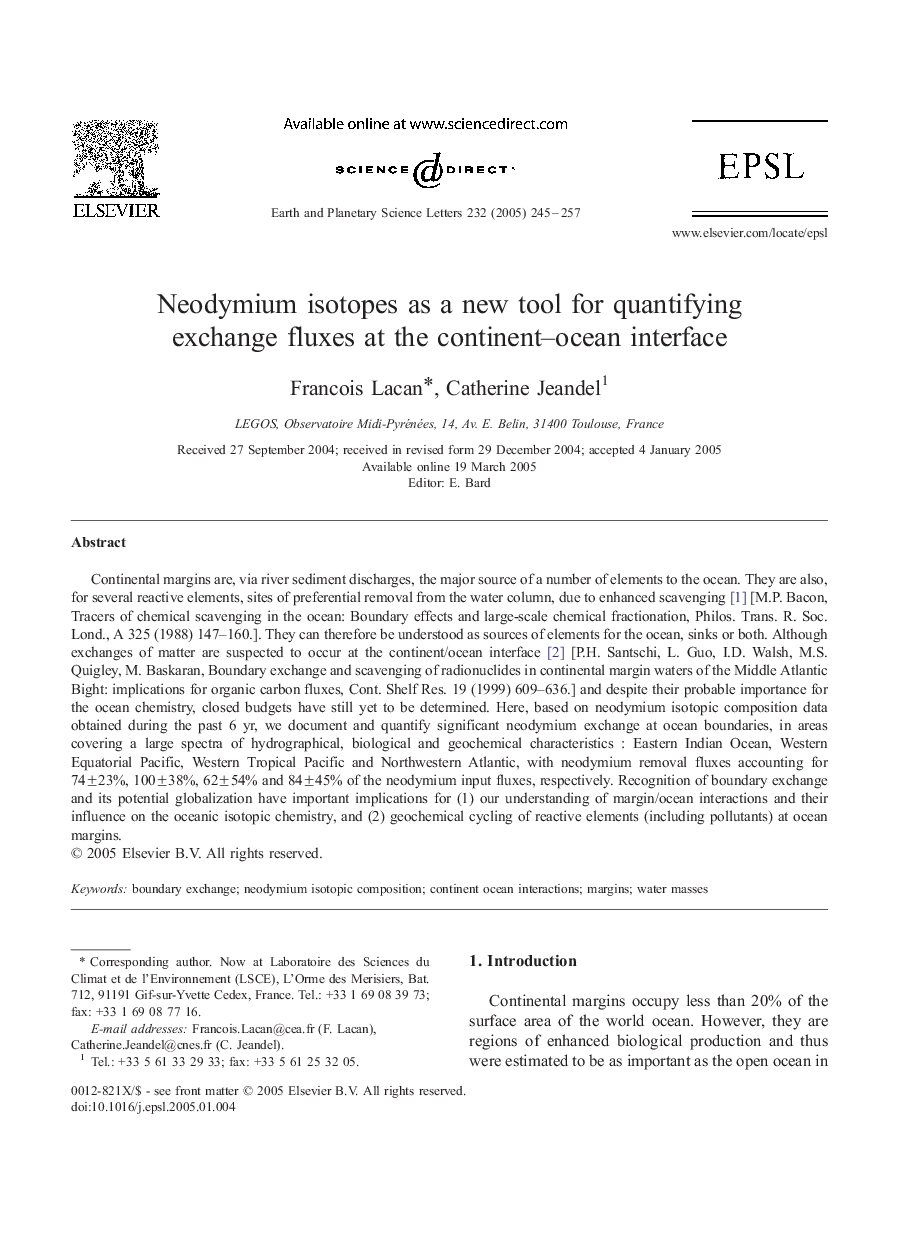| Article ID | Journal | Published Year | Pages | File Type |
|---|---|---|---|---|
| 9522462 | Earth and Planetary Science Letters | 2005 | 13 Pages |
Abstract
Continental margins are, via river sediment discharges, the major source of a number of elements to the ocean. They are also, for several reactive elements, sites of preferential removal from the water column, due to enhanced scavenging [1] [M.P. Bacon, Tracers of chemical scavenging in the ocean: Boundary effects and large-scale chemical fractionation, Philos. Trans. R. Soc. Lond., A 325 (1988) 147-160.]. They can therefore be understood as sources of elements for the ocean, sinks or both. Although exchanges of matter are suspected to occur at the continent/ocean interface [2] [P.H. Santschi, L. Guo, I.D. Walsh, M.S. Quigley, M. Baskaran, Boundary exchange and scavenging of radionuclides in continental margin waters of the Middle Atlantic Bight: implications for organic carbon fluxes, Cont. Shelf Res. 19 (1999) 609-636.] and despite their probable importance for the ocean chemistry, closed budgets have still yet to be determined. Here, based on neodymium isotopic composition data obtained during the past 6 yr, we document and quantify significant neodymium exchange at ocean boundaries, in areas covering a large spectra of hydrographical, biological and geochemical characteristics : Eastern Indian Ocean, Western Equatorial Pacific, Western Tropical Pacific and Northwestern Atlantic, with neodymium removal fluxes accounting for 74±23%, 100±38%, 62±54% and 84±45% of the neodymium input fluxes, respectively. Recognition of boundary exchange and its potential globalization have important implications for (1) our understanding of margin/ocean interactions and their influence on the oceanic isotopic chemistry, and (2) geochemical cycling of reactive elements (including pollutants) at ocean margins.
Keywords
Related Topics
Physical Sciences and Engineering
Earth and Planetary Sciences
Earth and Planetary Sciences (General)
Authors
Francois Lacan, Catherine Jeandel,
